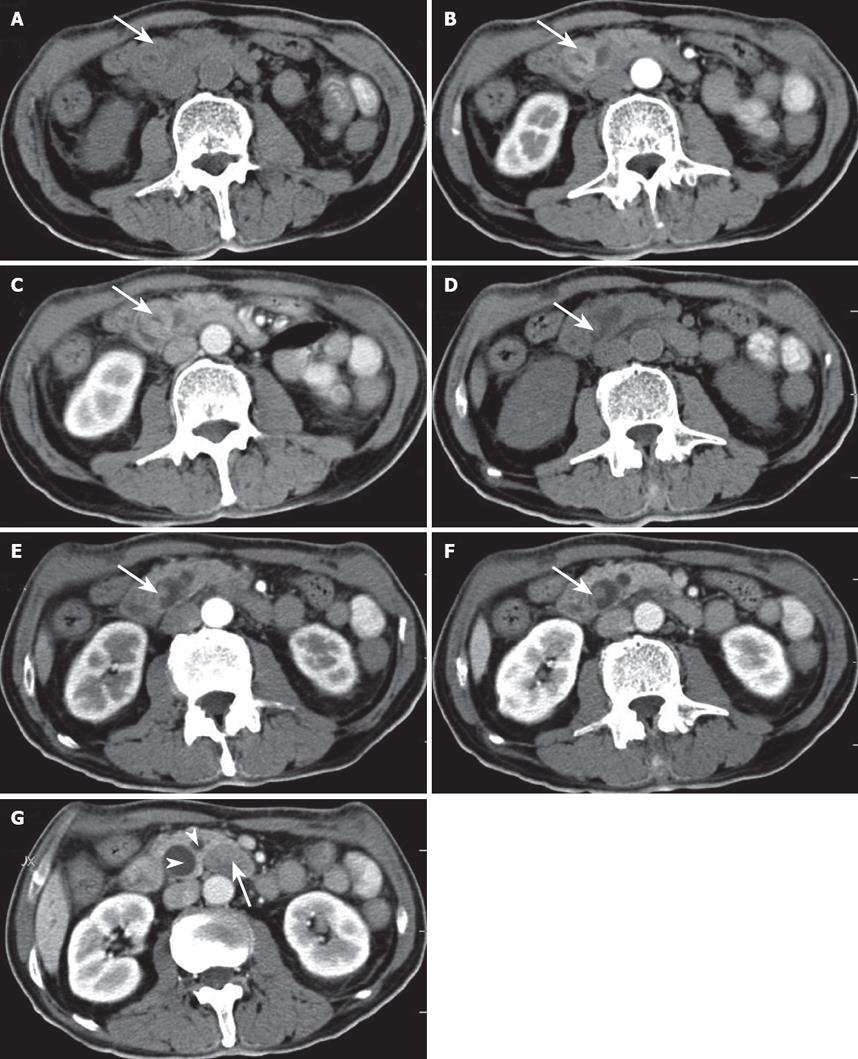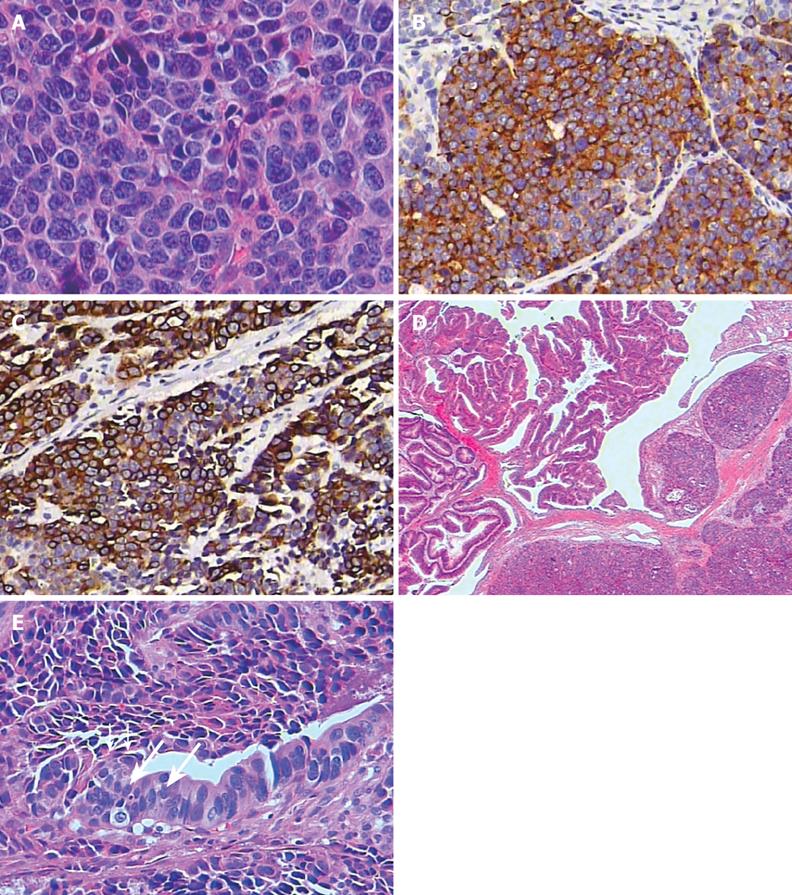Copyright
©2008 The WJG Press and Baishideng.
World J Gastroenterol. Aug 7, 2008; 14(29): 4709-4712
Published online Aug 7, 2008. doi: 10.3748/wjg.14.4709
Published online Aug 7, 2008. doi: 10.3748/wjg.14.4709
Figure 1 Abdominal CT reveals two well-defined masses in the ampulla of Vater.
On precontrast CT scanning, the two masses (arrow) show isoattenuation to the surrounding pancreatic parenchyma (A and D). On arterial and portal phase images after contrast enhancement, the larger oval mass (arrow) shows slightly higher attenuation than the surrounding pancreas (B and C). The smaller polypous mass (arrow) with a long pedicle and stalk shows slightly lower attenuation than the surrounding pancreas (E and F). Contrast-enhanced CT scan (G) shows peripancreatic lymphadenopathy (arrow) and dilatation of the common bile duct and the pancreatic duct (arrowheads).
Figure 2 MRCP demonstrates dilatation of intrahepatic and extrahepatic bile ducts and the pancreatic duct as well as the low signal intensity mass (arrow) in the ampulla of Vater.
Figure 3 Histopathological findings.
A: The tumor cells are composed predominantly of small to medium-sized, round or oval cells with hyperchromatic nuclei, inconspicuous nucleoli and scanty cytoplasm (HE, × 400); Immunohistochemically, the tumor cells are positive for synaptophysin (B) and low-molecular-weight cytokeratin (C) (× 200); D: Light microscopy shows the coexistence of villous adenoma and small cell neuroendocrine carcinoma (HE, × 20); E: The epithelium of the adenoma (long arrows) is in continuity with the small cell neuroendocrine carcinoma (short arrows) (HE, × 200).
- Citation: Sun JH, Chao M, Zhang SZ, Zhang GQ, Li B, Wu JJ. Coexistence of small cell neuroendocrine carcinoma and villous adenoma in the ampulla of Vater. World J Gastroenterol 2008; 14(29): 4709-4712
- URL: https://www.wjgnet.com/1007-9327/full/v14/i29/4709.htm
- DOI: https://dx.doi.org/10.3748/wjg.14.4709











